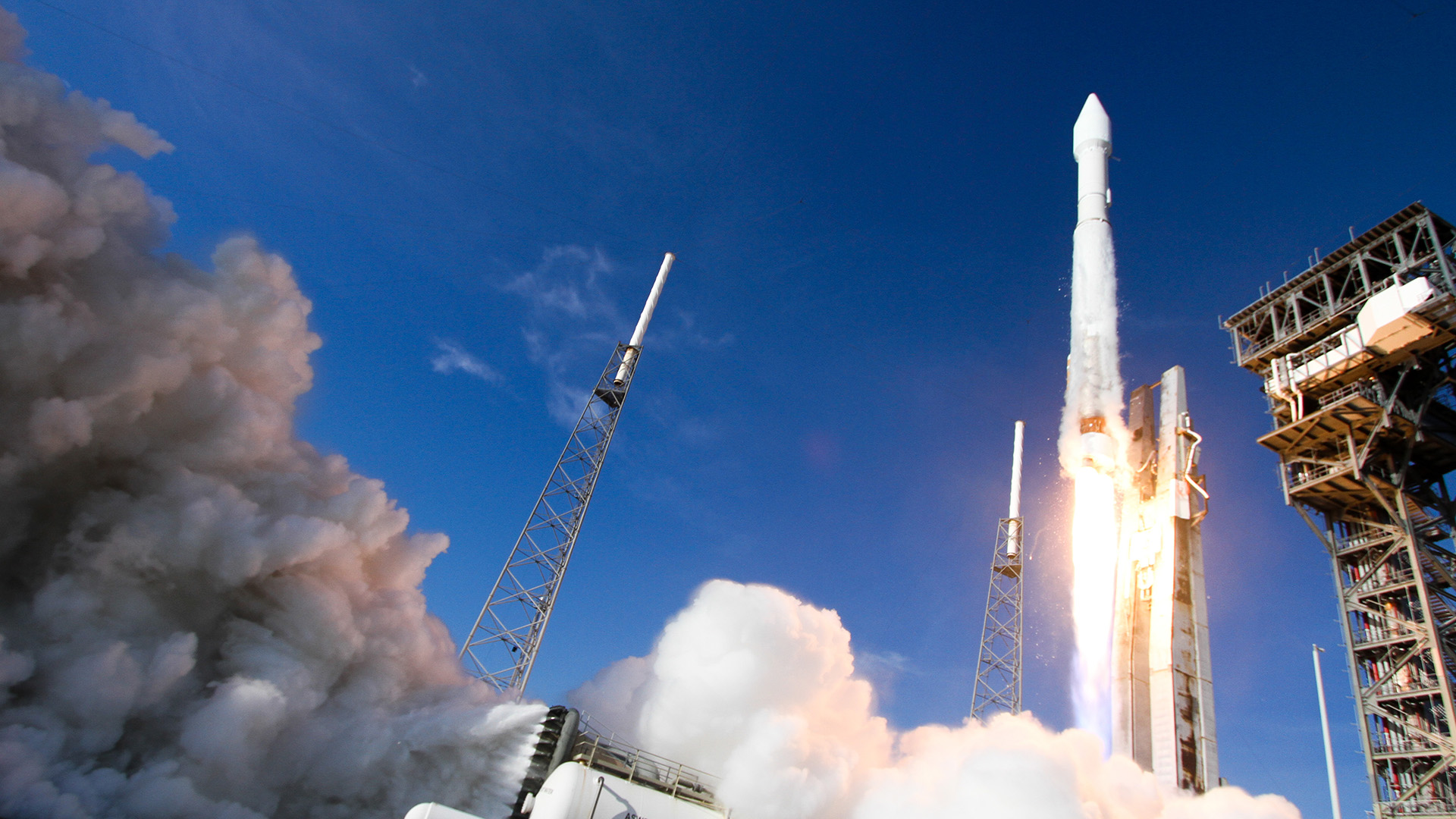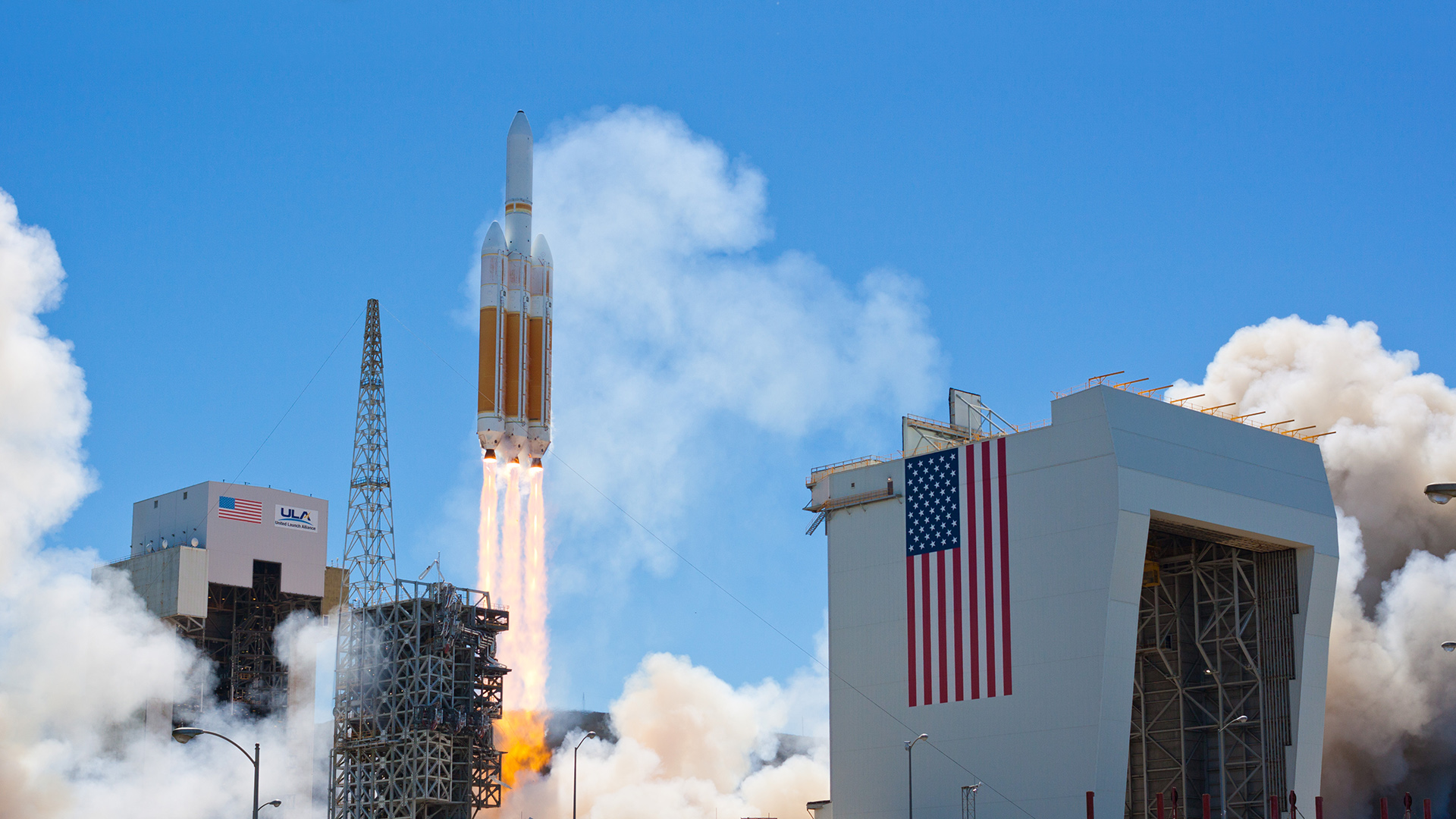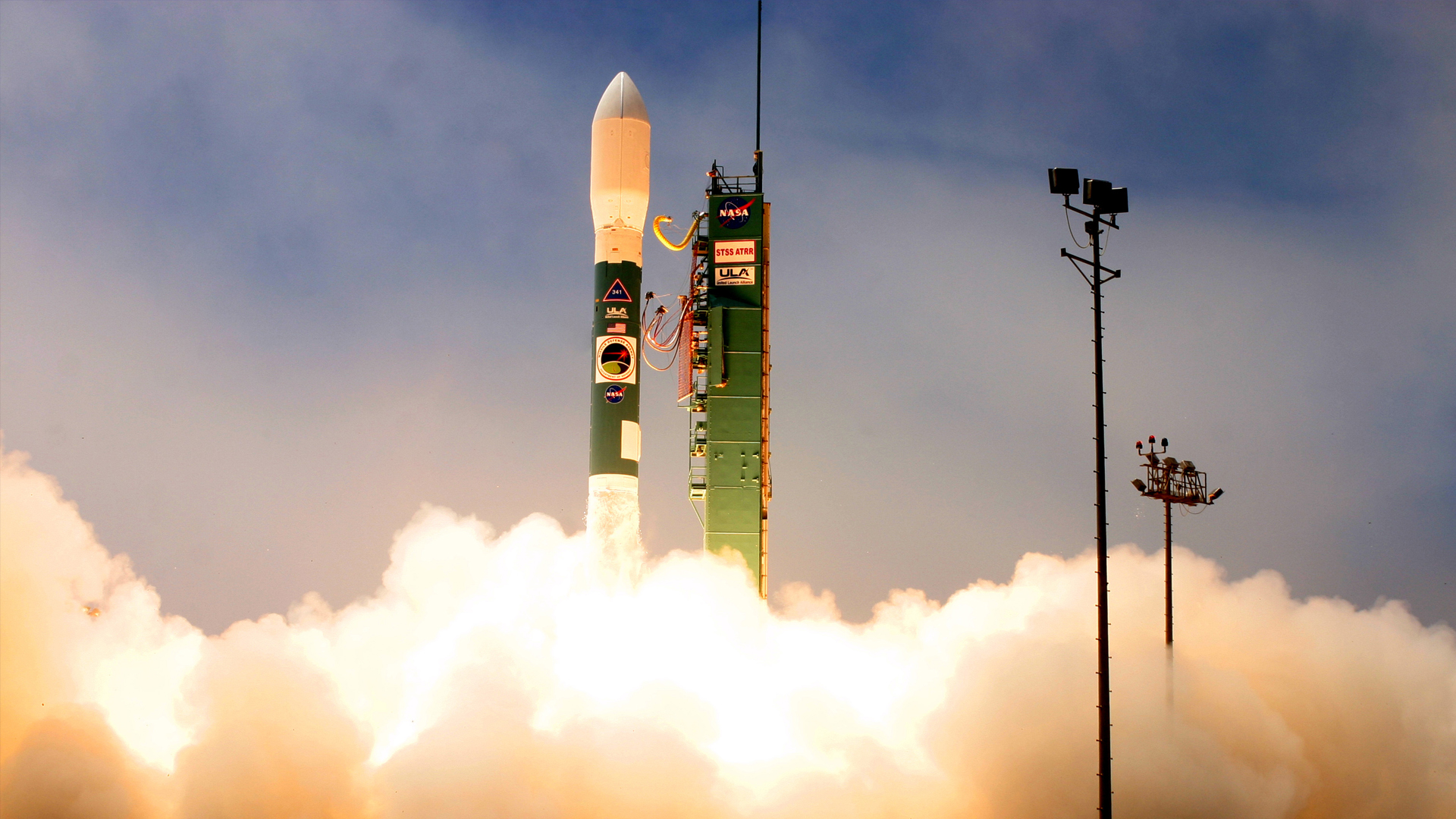Missions
Next LaunchUnited Launch Alliance Atlas V Rocket Successfully Launches NROL-39 Payload for the National Reconnaissance Office
Vandenberg Air Force Base, Calif., (Dec. 6, 2013) – A United Launch Alliance (ULA) Atlas V rocket carrying a payload for the National Reconnaissance Office (NRO) lifted off from Space Launch Complex-3 on Dec. 5 at 11:14 p.m. PST. Designated NROL-39, the mission is in support of national defense.
“Today’s successful launch of the NROL-39 mission is a testament to the tremendous government-industry partnership. We greatly appreciate the teamwork with the NRO Office of Space Launch and our many mission partners,” said Jim Sponnick, ULA vice president, Atlas and Delta Programs. “We are honored to be entrusted to launch these one-of-a-kind national assets to orbit to protect our national security and to support the many brave men and women serving around the world.”
This mission was launched aboard an Atlas V Evolved Expendable Launch Vehicle 501 configuration vehicle, which includes a 5-meter diameter payload fairing. The Atlas booster for this mission was powered by the RD AMROSS RD-180 engine, and the Centaur upper stage was powered by a single Aerojet Rocketdyne RL10A-4 engine.
In addition to the NROL-39 payload, the Government Experimental Multi-Satellite (GEMSat), consisting of 12 CubeSats, took advantage of the Atlas V launch vehicle ride share capabilities and were deployed following completion of the primary mission. The NRO and ULA partnered to develop an Aft Bulkhead Carrier (ABC) on the Centaur upper stage, which is a platform for accommodating auxiliary payloads aboard Atlas V missions.
The CubeSats were developed under a sponsorship of both the NRO and NASA. The Aerospace Corporation, the Air Force Institute of Technology and the Army developed the seven NRO-sponsored CubeSats. The five NASA-sponsored CubeSats were developed by Montana State University, California Polytechnic State University, the University of Michigan, and Medgar Evers College of the City University of New York.
“We are pleased we could support the NRO, NASA and all of the associated institutions by successfully delivering these important auxiliary payloads which will test and validate new technologies for debris mitigation, propulsion, space weather, communications, on-orbit data processing and the use of commercially available components,” said Sponnick.
Developed by the United States Air Force to provide assured access to space for Department of Defense and other government payloads, the commercially developed EELV program supports the full range of government mission requirements while delivering on schedule and providing significant cost savings over the heritage launch systems.
ULA program management, engineering, test, and mission support functions are headquartered in Denver, Colo. Manufacturing, assembly and integration operations are located at Decatur, Ala., and Harlingen, Texas. Launch operations are located at Cape Canaveral AFS, Fla., and Vandenberg AFB, Calif.
For more information on ULA, visit the ULA website at www.ulalaunch.com, or call the ULA Launch Hotline at 1-877-ULA-4321 (852-4321). Join the conversation at www.facebook.com/ulalaunch and twitter.com/ulalaunch.





